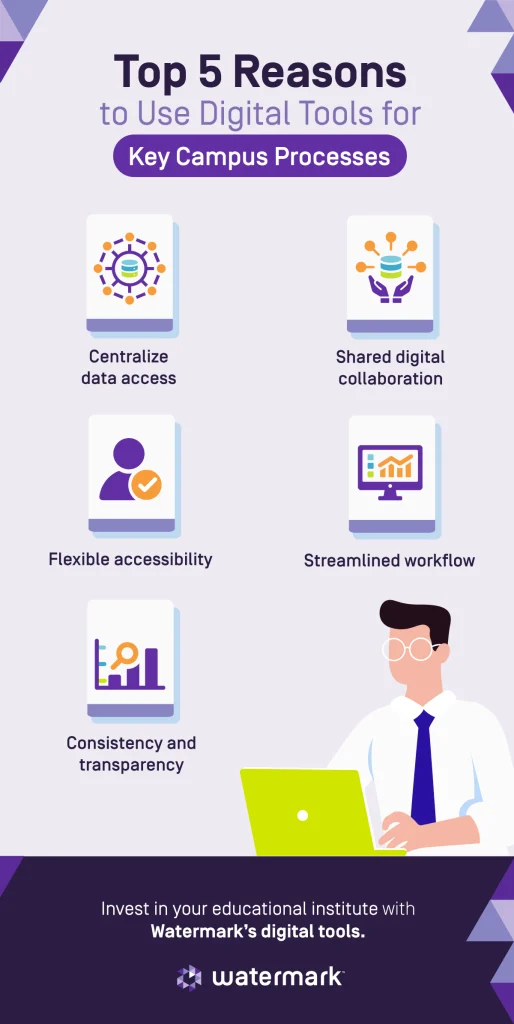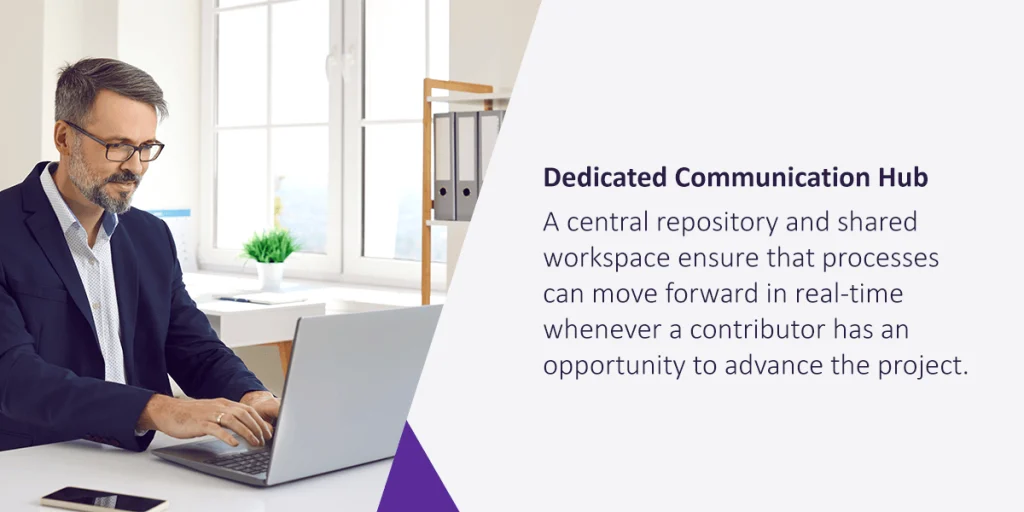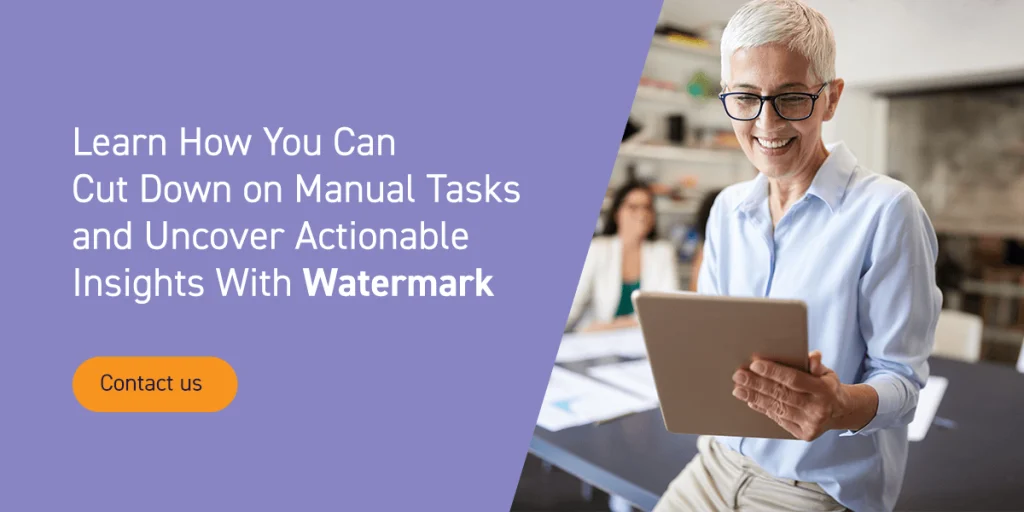




Now more than ever, higher education institutions are exploring digital tools for key campus processes, and for good reasons. If you’ve ever tried to reconcile data from two different spreadsheets, evaluate a tenure review binder, or sort through stacks of student assignments, you know the downsides of manual processes.
Educational technology has essential advantages for making processes more secure, consistent, efficient, and effective. The case for digital solutions only grows as institutions support staff and students with broader needs across more locations.

Here are seven advantages of the use of digital technology to support key learning and improvement efforts:
Digital tools offer two crucial advantages over manual processes. They provide:
These factors allow your institution to capture and retain data essential to key processes and report on that data over time.
Beyond administrative processes, digital educational solutions offer storage options that help create an effective teaching environment. Professors and students can access large volumes of authoritative educational content, such as books, articles, and research materials. Professors in higher education institutions record lectures and store them securely.
When you log in to a digital solution, you enter a shared workspace where multiple participants can contribute to a common process or project. All work is captured in a purpose-built system that guides participants through the process. The shared workspace shapes the work to support the desired outcome, whether learning outcomes assessment or accreditation self-study. Consider a few examples:
A student and faculty member using an ePortfolio to share, reflect on, and evaluate a capstone project
Committee members and administration stakeholders using a tool specifically designed for approving curriculum changes
The team responsible for gathering evidence for accreditation and collaborating on components of the self-study narrative
Digital solutions ensure that location and time of day are no longer barriers to the ability of participants to contribute their work to key processes. Now, participants only need a connected device and login credentials to contribute from different locations at times that accommodate their other commitments.
The system is available 24/7 and offers different access configurations. For example, you can grant limited or full-access to certain faculty officials while excluding others. Additionally, digital tools for higher education institutions allow members to share data effortlessly. These advanced features help educators adapt to different situations and improve the teaching and learning landscape. Consider some real-world scenarios that digital solutions make possible:
A central repository and shared workspace ensure that processes can move forward in real time whenever a contributor has an opportunity to advance the project. Participants gain role-appropriate insight into what’s done and what work remains. They can use the system to facilitate discussion or advance the process to the next step or stakeholder.

Digital tools can also provide prompts and reminders that minimize the need to make calls or send emails to check on progress or reinforce deadlines. This ensures that key milestones and dependencies are met so the work of other contributors can move forward.
Digital solutions can also ensure that processes such as curriculum review, outcomes assessment, course evaluations, and faculty reviews are conducted consistently and according to your institution’s established practice.
Consistency minimizes risk for high-stakes processes like faculty review. It ensures that several-year assessment cycles provide the data needed to inform continuous improvement efforts and provide high-quality evidence to support accreditation self-study. When your shared digital dataset and workspace reside within a solution with process management tools, participants also gain role-appropriate insight into the progress of the initiative in question. That gives peace of mind to a faculty member under review and a view of progress to the process leader.
Knowing how your students perform and being aware of their challenges is vital. Tools that automate processes and provide data help you plan curriculum and activities to improve overall academic performance.
Higher education institutions leverage advanced tools to assess the strengths and weaknesses of students and track their general progress. Professors, deans, and administrators gain access to online records of assessments, exam results, and attendance. They can monitor the demographics involved in each subject or activity to gain insights into patterns and strategy impacts.
Educational technology allows you to transfer some processes to students. Students become more accountable for their progress when they have more control over their education. Allowing students to have a degree of ownership helps develop a sense of responsibility. Professors and faculty officials can develop strategies to support and direct learners where necessary.
There are some challenges associated with the use of digital tools for campus processes:
Digital tools are only functional when they’re accessible. One benefit of modern educational digital tools is that they often support multiple operating systems and devices. Faculty officials may use their cell phones and laptops to enter the system. They can also download the information, helping circumvent potential dead zones and other connectivity challenges.
Students, facilitators, and administrative officials need a basic understanding of technology to use digital tools effectively. This challenge can be significant when you transport most campus processes to the digital space all at once.
The best approach may be to incorporate the strategies gradually to allow stakeholders to adjust to the developments. You should also provide training to help the team quickly familiarize themselves with the technology. Partnering with a service provider that focuses on people as much as technology is a step in the right direction.
Some educational environments may be resistant to change, especially when it involves implementing digital solutions. People may be unfamiliar with how online programs streamline operations or have long-standing attachments to traditional processes.
If you face such a challenge, the best approach is to educate the stakeholders about the advantages of educational technology over manual processes. A demo can help them get a realistic sense of how it works.
Given the critical downsides of manual processes, the importance of digital tools is clear. What digital tools can make the most significant impact at your institution? Identify a reputable vendor partner, follow a proven process for evaluating solutions, and learn about the implementation process for the solutions you consider. If you’d like to discuss Watermark solutions, contact us today.






























































































































































































































































































































































































Submit this form to schedule a meeting with one of our reps to learn more about our solutions. If you need customer support instead, click here.